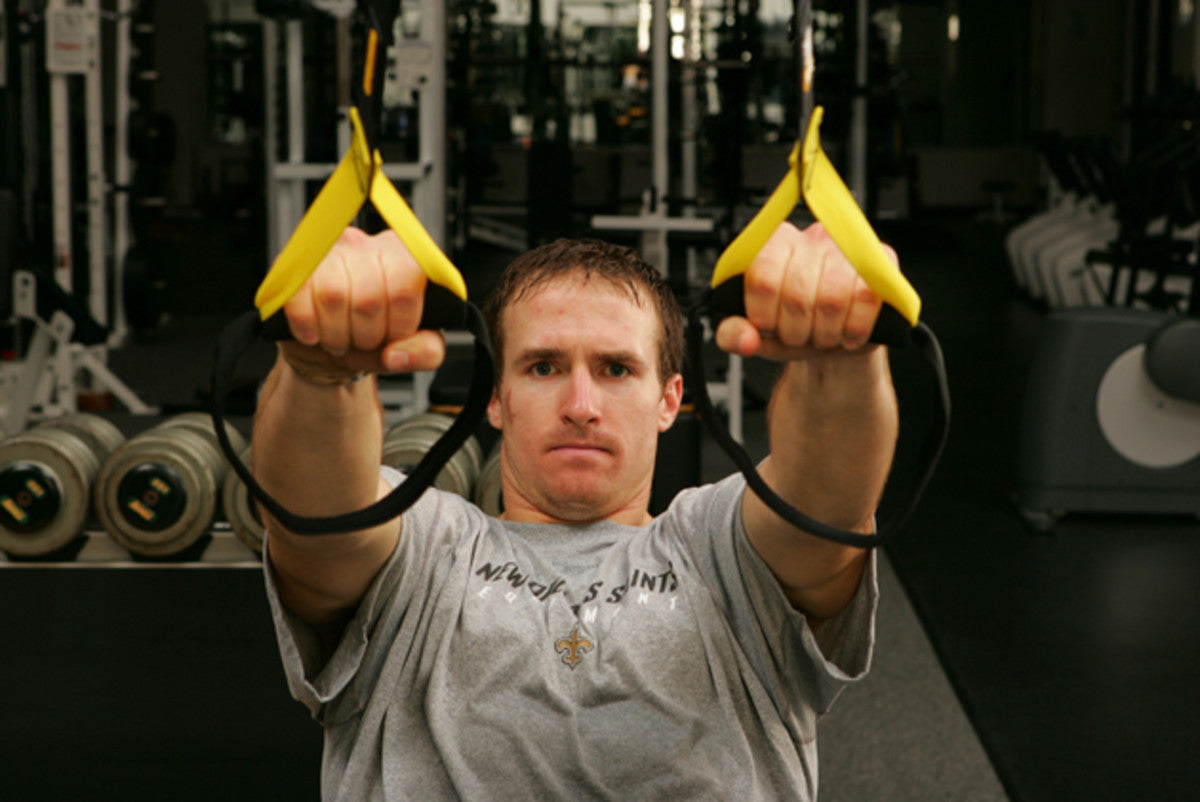Transformation Blog Series, Part 6 of 7
“TRX allows you to be “all in” physically and emotionally because you can use it anywhere, anytime for any fitness goal. You are on your own journey, embrace your positive results, take every opportunity you can to celebrate your body’s movement and keep your eyes on your next small victory.”
As mentioned in our introductory blog about how to successfully achieve a body transformation, with the exception of identical twins, no two people have the same genetic characteristics and therefore will not respond to movement, diet and changes in their lifestyle at the same pace or with similar results. Such individual variation between people explains why some individuals show such great improvements after participation in a given program (high responders), whereas other people experience little change after following the same program (low responders). However, don’t allow the fact that you may be a low responder discourage you from ever making changes in your life. The good news is that even small changes can yield big body transforming results. The key is to identify your strengths and weaknesses, set some specific, realistic goals that are measurable and time-based, and then get “all in” with your training plan.
Here’s how to do just that:
Setting Realistic Goals
Any program you embark upon must take into account your individual differences, specific needs and performance abilities. Therefore, you must have realistic goals about your training and make selections that will lend themselves to you meeting these individual needs. One of the obstacles that tend to lead people away from a healthy relationship with exercise is the selection of exercises that aren’t fun, engaging or motivating. Maybe you’re trying to exercise early in the morning, when you are better in the evening. Maybe you’re selecting exercise programs that don’t achieve what you want from your training. Consider the following and see what might be standing in the way of fitting movement into your life:
- What time of day are you most successful at sticking with exercise?
- What do you like to do?
- Do you enjoy workouts in a group or doing it alone?
- What are your three favorite body parts and what three would you like to see change?
“It’s how you respond to these challenges that is the deciding factor in whether you achieve your larger goals.”
Once you are able to identify exactly what may be an obstacle, and what you want from your training program, work to figure out how to make positive results happen. Be sure to give yourself credit for even the small steps you take that result in even little changes. Your commitment to your goal of transformation is to be commended and you should always give yourself grace, honor and gratitude for what you are doing to make changes.

Setting Specific Goals
Because training adaptations are specific to the type of training you are performing and to the volume and intensity of the exercises selected, the program you are using must stress the physiological systems that are critical for optimal performance in the given area that you are trying to change. For example, if you desire more strength, you must perform movement in volumes and at intensities that will cause muscular overload, stimulate the need for the muscles to become plastic, meaning they will grow (hypertrophy) as well as adapt to the neural changes associated with improved strength. If you want to improve strength and power, you need to train for strength and power. If you want to lose fat and increase your lean mass, you must train with a metabolic goal in mind. Don’t expect a better cardiorespiratory system if you are training for more strength and neglecting the aerobic component.
The following table is based on the American College of Sports Medicine (ACSM) Guidelines for Increased Strength 1. If strength is a goal for you, this table can guide you in selecting the reps, sets and loads you can apply to your TRX program to achieve strength training goals, with enough flexibility to ensure that your individual needs can be met.

You will notice that the “load” column refers to a prescribed percentage of your 1RM (one repetition maximum). When using your body mass as resistance on the TRX® Suspension Trainer™ the most effective way to manage load is to follow the repetition recommendations in the “volume” column. For example, when training for strength development use a body angle that requires you to reach muscle fatigue in the recommended repetition ranges. Remember to always focus on strict movement standards and do not sacrifice quality for quantity. For more advanced strength athletes using a weight vest is an excellent way to increase intensity once you have maximized body angle.
Get All In
As a 30-year veteran fitness trainer, I have seen many people get really excited about starting a training program, only to find that life gets in the way and interferes with their dedication to their new program. The biggest obstacle for most people is time, or a lack thereof. Being really excited for the first few workouts is expected, but once you miss one, you tend to miss another one and then another. Pretty soon you’ve stopped exercising altogether and you’re “all out.” This feeling of guilt tears at us emotionally and can really decrease motivation, making us feel that we have let ourselves down.
“Remember, success is often measured in millimeters, small victories that deserve to be celebrated and that generate positive momentum towards your larger goals.”
Although the small defeats in trying to make a body transformation are not easy, they are likely going to happen at one point or another. It’s how you respond to these challenges that is the deciding factor in whether you achieve your larger goals. This is one of the major reasons why the TRX Suspension Trainer is one of the best tools for achieving a total body transformation. The flexibility it provides makes it a perfect tool for time-crunched individuals looking for that total body transformation because it can deliver quick, efficient workouts that can be fit into your schedule anywhere, anytime. TRX lets you perform exercises anywhere at any time because it is portable, flexible and customizable. Movement selection can be customized to meet your level, skills and abilities exactly, quickly and efficiently.
Remember, success is often measured in millimeters, small victories that deserve to be celebrated and that generate positive momentum towards your larger goals. 2 more reps, 3% less body fat, 1 millimeter less on your waist, etc. Look for your small victories and avoid allowing a missed workout. You’re running your own race, so someone else’s should not discourage your effort. Your body is unique and responds to exercise thusly. TRX allows you to be “all in” physically and emotionally because you can use it anywhere, anytime for any fitness goal. You are on your own journey, embrace your positive results, take every opportunity you can to celebrate your body’s movement and keep your eyes on your next small victory.
References:
1. Esso, M. 2013. Resistance Training for Health and Fitness. AMerican College of Sports Medicine.
 Irene Lewis-McCormick M.S is Adjunct Faculty at Drake University, an SCW Fitness Education (SCW) Certification Master Trainer and the Education Director at Octane Fitness. An Orange Theory Fitness coach, she’s a twice published author (Human Kinetics) holding advisory board positions with Diabetic Living and the National Egg Council. Named Top 3 Group Fitness Instructor 2015 by IDEA Health & Fitness, Irene is a RYKA Ambassador and Subject Matter Expert for ACE. Irene presents education for SCW, ACSM, IDEA and NSCA. She is an SCW, TRX, Tabata Bootcamp, Barre Above, JumpSport and Octane Fitness master trainer. Certifications include SCW, ACSM, NSCA, ACE, AFAA & AEA.
Irene Lewis-McCormick M.S is Adjunct Faculty at Drake University, an SCW Fitness Education (SCW) Certification Master Trainer and the Education Director at Octane Fitness. An Orange Theory Fitness coach, she’s a twice published author (Human Kinetics) holding advisory board positions with Diabetic Living and the National Egg Council. Named Top 3 Group Fitness Instructor 2015 by IDEA Health & Fitness, Irene is a RYKA Ambassador and Subject Matter Expert for ACE. Irene presents education for SCW, ACSM, IDEA and NSCA. She is an SCW, TRX, Tabata Bootcamp, Barre Above, JumpSport and Octane Fitness master trainer. Certifications include SCW, ACSM, NSCA, ACE, AFAA & AEA.


